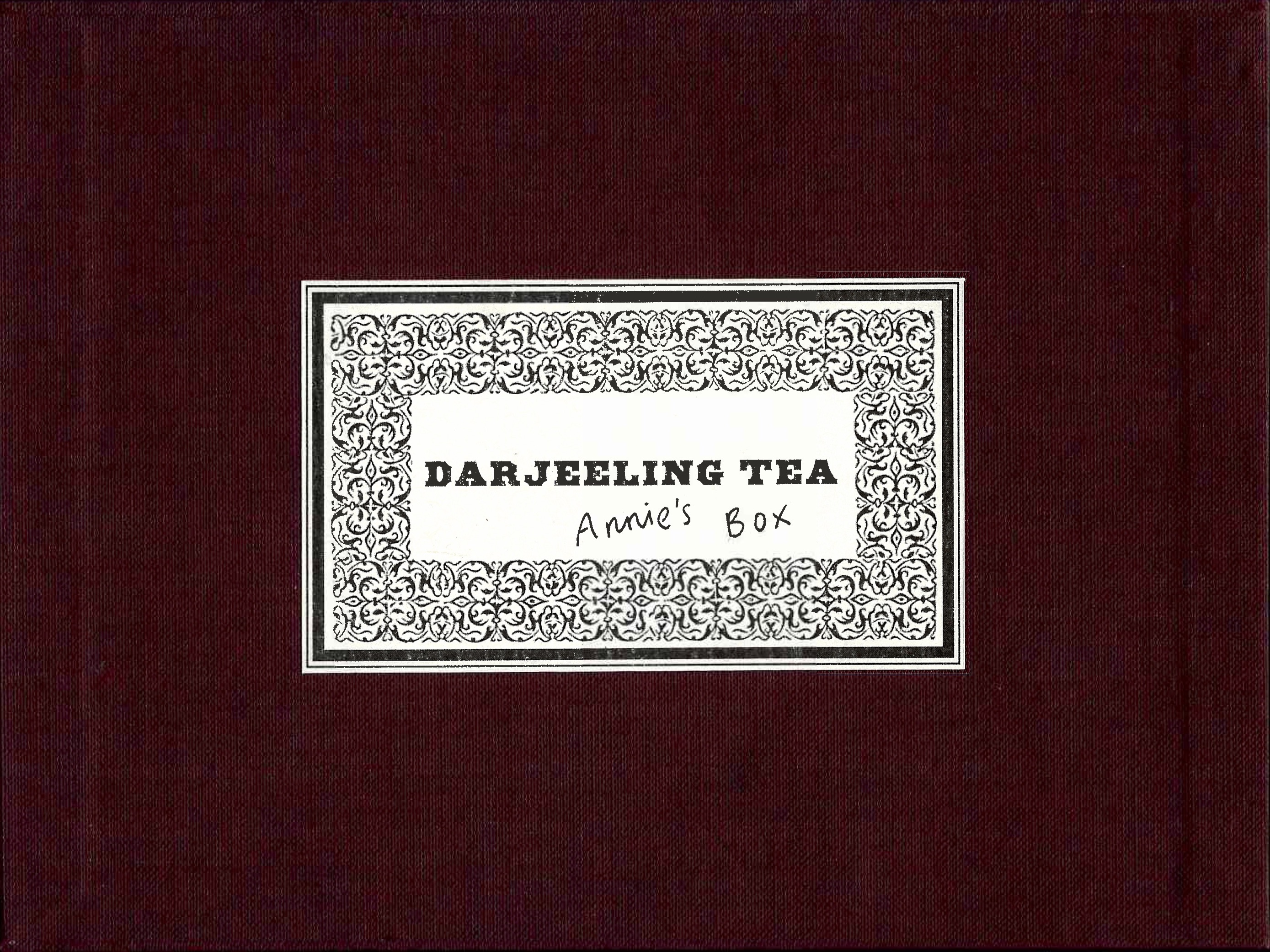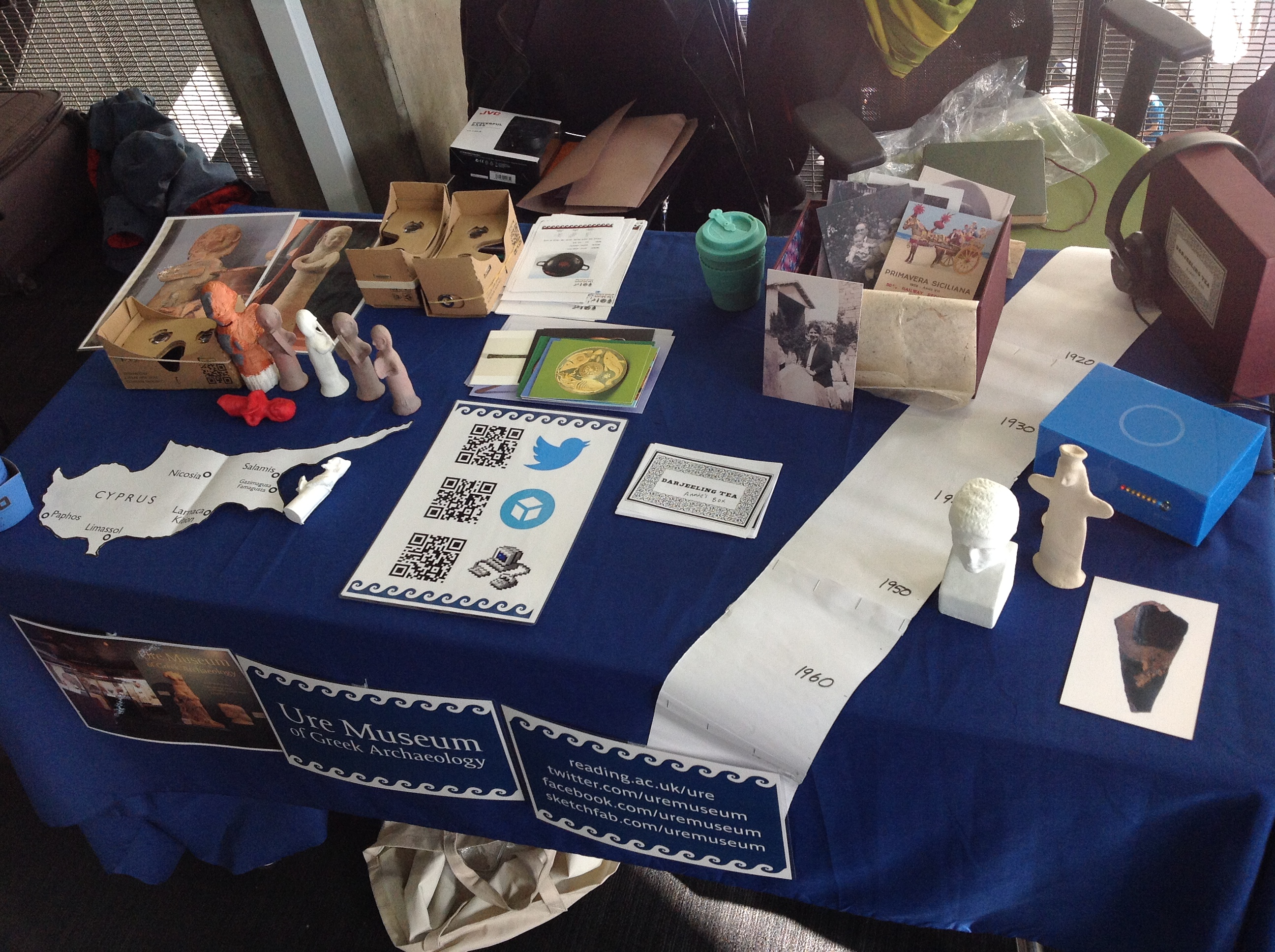By Amara Thornton (Research Officer, Ure Museum)
This month we launched our research and outreach project “Annie’s Box”. It came to fruition through a generous grant from Friends of the University of Reading, enabling us to work with a company called Museum in a Box. Museum in a Box is a heritage-focused technology company providing clients with the opportunity to create and curate mini-museums of their own.

The first thing to say is that each “Museum in a Box” is actually two boxes. One contains a selection of postcards and 3D prints, each of which is fitted with a Near Field Communication sticker. When the be-stickered item is “booped” on the other box (containing a Raspberry Pi), a piece of audio content relevant to the item in question is generated. All clear? (If not, you can read more about it here!)
“Annie’s Box” includes seven postcards and two 3D prints. Each of them relates in one way or another to the life of the Ure Museum’s first curator, Annie Ure. Those of you who have been to the Ure Museum will have seen the recreation of her husband Percy Ure’s desk. Now Annie Ure has a space of her own in the Museum. And even better, her space can be taken outside the museum and shared.


We had a few priorities in creating the content for “Annie’s Box”. One main priority was to reflect Annie’s life as both an archaeologist and as a twentieth century woman who lived at a time of great change. So, we cover her life as an undergraduate student at University College Reading during the suffrage movement as well as her archaeological excavations at Rhitsona. We cover her experience as a wife and mother alongside her curatorial work.
Each piece of content in the box is written to reveal a different aspect of Annie’s life. But there’s a lot we didn’t put in and indeed a lot we don’t know. But that’s the nature of historical and archaeological research – you are always working with fragmentary information!
There are multiple perspectives as well. While the (slight) majority of the items in the box feature adult Annie’s “voice” (expertly recreated by Head of Classics Dr Emma Aston), the three artefacts in the box (two 3D prints and one postcard) speak as animate objects.
The bespoke box these items come in is also meaningful. We are thrilled with the result which is the work of artist Takako Copeland. We want people to use “Annie’s Box” not just as an interesting technological interactive, but as the springboard for discussions about why it is important to research and think about the history of archaeology and the history of collections. The items, and the box they come in, help (I hope) to emphasise the rich and diverse history of museums and museum collections.
The research and content creation for this box drew on several different collections, and it was a collaborative effort. Two Classics undergraduate students, Ewura-Ama Quarshie and Ruth Lloyd, researched and drafted pieces of content for the box; Ewura-Ama also recorded one of our pieces of content. Ruth Lloyd and I undertook research in the Ure family archive, which contains important documents and photographs that were included. We investigated various collections held by the University of Reading’s Special Collections which also informed our research. The archives held in the Ure Museum are also featured – particularly the excavation records of Annie Ure and Percy Ure’s work at Rhitsona, Greece.
We launched Annie’s Box on 9th October with a suitably period appropriate tea-party, complete with delicious Victoria sponge and kourambiades (Greek shortbread). But the party needed musical accompaniment, and for that I turned to one of the archives held in Special Collections that helped us illuminate Annie Ure’s student days at University College Reading. The Chell and Stafford Collection is assorted records of two students who were Annie’s contemporaries. Among the records was a series of dance cards, and one of these provided the soundtrack for our launch. It was from a dance held in June 1913, at St Andrew’s Hall, Annie’s undergraduate (and postgraduate) Hall of Residence. I’m sure she was there.
Our volunteer and graphic-designer in residence Matthew was inspired to re-create the dance card for our tea-party, and I did a bit of musical digging to add references to the composers, titles and dates of the dances listed. While I wasn’t able to find all the dances (“Pelican’s Parade” was irritatingly elusive), many of these old numbers are discoverable online. This research helped situate the St Andrew’s Hall dance within the popular culture of the period; most of the numbers featured had been written within a year or two of the date of the dance. I was intrigued to find that the plot of The Pink Lady (Ivan Caryll‘s 1911 musical) had several Classical references – characters included a Satyr, an antiquities dealer and two Greek statues!

Now “Annie’s Box” is a reality and appropriately launched, we are working on next steps. It was originally conceived as an outreach project and we are now creating a session for schools with it as the centrepiece. We also took “Annie’s Box” and 3D printed ancient Cypriot votive figurines (known as #TheVotives) to MozFest’s Arts & Culture Salon where we were really excited to see the questions and discussions it generated.


If you’d like to find out more about “Annie’s Box” contact us at ure.education@reading.ac.uk.
For their role in helping bring Annie’s Box to fruition we would like to thank: Bonnie Ure and the Ure family, George Oates, Charlie Cattal-Killick, Takako Copeland, Ruth Lloyd, Ewura-Ama Quarshie, Emma Aston, James Lloyd, Duncan Bolt, Matthew Knight, Ollie Douglas, Caroline Benson and University of Reading Special Collections, and the Friends of the University of Reading.

